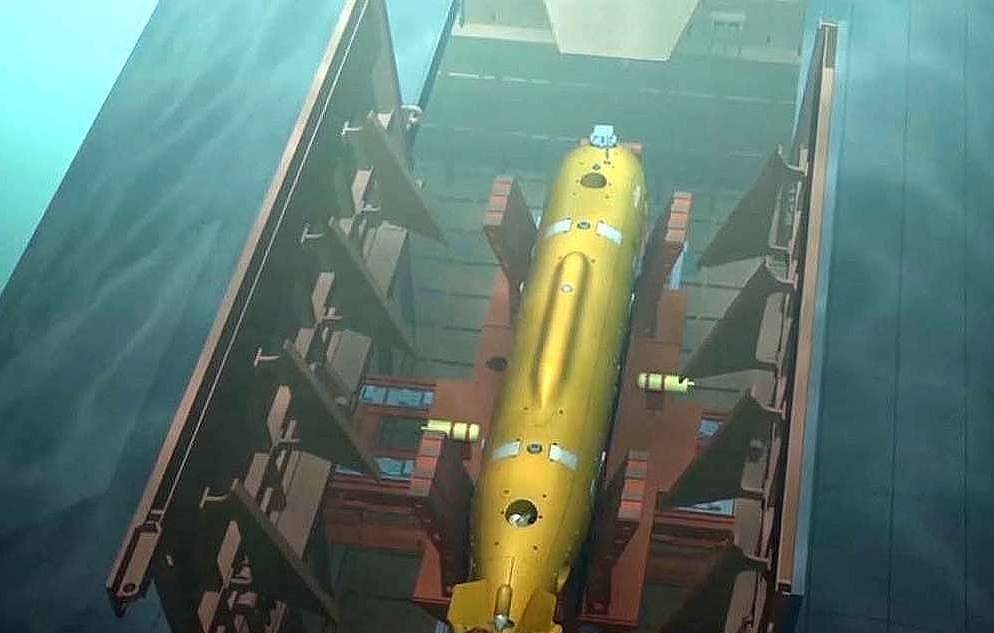Part 1 of 2 Parts
A popular Russian State TV anchor has warned the U.K. that Russia could totally destroy them with a nuclear tsunami as retaliation for the aid that the U.K. has provided Ukraine. Dmitry Kiselyov has a Sunday prime time show on Channel One in Russia. It is one of the most watched shows in Russia. He claimed on the 1st of May that an attack by Russia’s Poseidon nuclear underwater drone could drown the U.K. under a sixteen-hundred foot tidal wave of radioactive seawater.
The veracity of Kiselyov’s claim was checked with three experts on nuclear weapons, submarines and drones. Here is the information that they found about the Poseidon drone and the damage it could cause.
The Poseidon underwater drone is also called “Status-6” in Russia and it is called “Kanyon” in the U.S. It is basically a very large nuclear powered autonomous torpedo armed with a nuclear warhead. Most of what is known about the Poseidon comes from a leak on Russian TV in 2015 about a government project to develop an underwater nuclear drone. According to a mission statement for the Poseidon, the project is focused on “damaging the important components of the adversary’s economy in a coastal area and inflicting unacceptable damage to a country’s territory by creating areas of wide radioactive contamination that would be unsuitable for military, economic, or other activity for long periods of time.”
In 2018, a draft of the Pentagon’s Nuclear Posture Review stated that Russia was developing a “new intercontinental, nuclear-armed, nuclear-powered, undersea autonomous torpedo”. The Poseidon torpedo is about sixty-six feet long, can dive to three thousand three hundred feet, and has a range of at least six thousand miles.
This information was provided by Sidharth Kaushal who is a research fellow for sea power and missile defense at the U.K. defense and security think tank RUSI. Much of its actual capabilities remain unknown. Its key strengths are said to be its ability to operate very deep and very fast under water. This makes it very hard to intercept.
David Hambling is a technology journalist specializing in defense. He has authored a book about drones. He said, “It’s a torpedo which has an extremely long-range, can travel at high speed and then packs that nuclear punch.”
Pavel Podvig is an expert on Russian nuclear forces and a senior researcher at the U.N. Institute for Disarmament Research (UNDIR). He said that the development of Poseidon was motivated by Russian ambitions to display a range of weapons that can evade the U.S. missile defense system according to
Poseidon is called a drone because it can navigate autonomously. It may even have the ability to be remotely redirected or to have its mission aborted after it is launched. It is believed to have a titanium hull which permits it to withstand pressure at extreme depths. It could potentially be used as a seabed weapon. This means that a large, expensive and noisy submarine does not have to be risked to launch it. The idea would be to pre-position the torpedo on the seabed and activated it from there rather than launching it from a submarine which would make it an obvious target for preemptive strikes.
Please read Part 2 next
Nuclear Weapons 778 – Is The Russian Poseidon Underwater Nuclear Drone Real – Part 1 of 3 Parts

